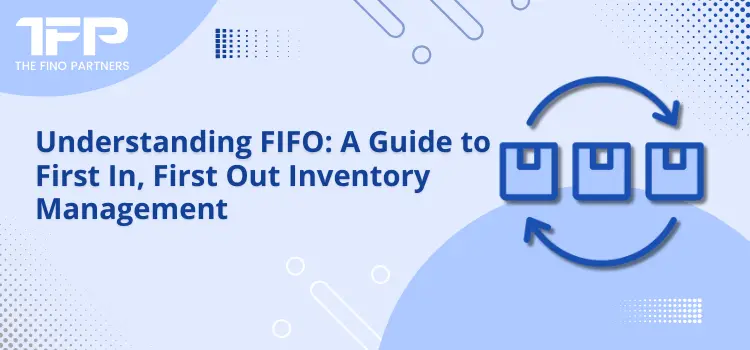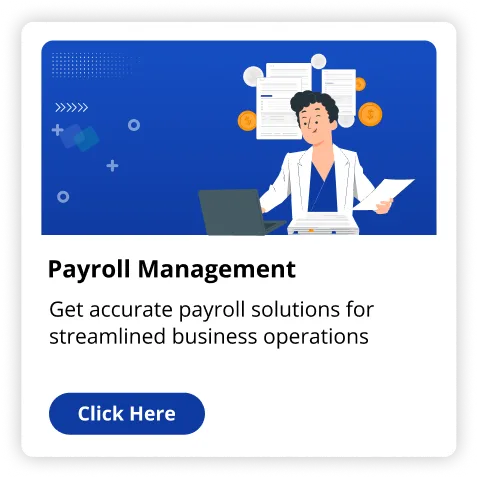Inventory management can sometimes make or break your company. One particular method that lots of companies in the US utilize is the First In, First Out (FIFO) method. Companies that make use of effective inventory management practices as FIFO can make up to 15% profit boost, based on a recent report. This statistic alone shows how critical managing inventory correctly can be to your business.
In this article, we will explain what FIFO is, so you can see how this inventory technique can help your business. We will also see how accounting outsourcing services for manufacturing businesses in the USA can help you make the most of this technique.
What Is the FIFO Method?
FIFO means First In, First Out and that is precisely what it means: First In, First Out. The very first items you add in your inventory are the very first things you sell. Imagine it as a grocery line. Individuals who arrived 1st are the very first to be checked out and new arrivals wait their turn. In inventory terms, this means your oldest stock sells first and newer stock follows.
You can utilize FIFO in many different business settings; it is particularly helpful when you are working with fragile items like medicine or food and must sell the oldest products first to stay away from waste. But even in case you don't deal with perishable goods, FIFO can enable you to keep an adequate inventory flow.
What Does FIFO Mean In Practice?
Take an easy example. Assume you run a clothing shop. You bought fifty shirts for USD 10 each in January. You purchased another fifty shirts in February for USD 12 each because of the cost hike.
In case you used FIFO, if a customer purchases a shirt, you sell him one from the January batch first. So, that sale would cost you USD 10. When all the January shirts are gone you will begin selling the February shirts for 12 USD each.
And here is exactly where the advantage lies: Simply by first selling the older, lower cost items, your financial records show you reduced inventory costs while keeping your sales rates competitive. And this also means your profit margins can increase because the price of replacing your inventory increases.
Relation Between FIFO & COGS (Cost of Goods Sold)
A typical term related to FIFO is Cost of Goods Sold (COGS). This is the direct cost of producing the products your business sold. With FIFO, your COGS is determined by your oldest inventory cost.
In our example, in case you sold 30 shirts, the cost of those shirts will be recorded as USD 10 each since that has been what you spent on the very first batch. This keeps your expenses low in an inflationary sector where newer products might cost more to replace.
In the long run, FIFO might offer your company a greater net income than utilizing other techniques like Last In, First Out (LIFO) since the cost of older goods is usually reduced, particularly when costs are increasing.
FIFO vs LIFO: What is the Difference?
You might have heard about LIFO (Last In, First Out), which is the opposite of FIFO. In the LIFO technique, the newer items are sold first. This is attractive in some situations where inventory costs are dropping but isn't typical of the way inventory flows through nearly all businesses.
For instance, in case the price tag of new inventory rises, the price of products sold will be more under LIFO and this can lower your net earnings. This might still result in lower taxes because your reported profit is smaller. On the downside, FIFO typically increases income but could raise taxes your business pays, based on your jurisdiction.
When to Use FIFO?
FIFO works best when inventory cost increases with time, as it typically does in inflationary markets. By selling more mature, lower cost inventory first, you can keep newer, higher cost inventory that might deliver greater profitability when available later on.
Additionally, it is the technique of choice for industries where products have a shelf life, like:
- Grocery stores: Selling older produce and items first keeps anything from going bad and minimizes waste.
- Pharmacies: Medications frequently have expiration dates, so FIFO keeps out expired products.
- Retail: Clothing or seasonal items may go out of style and FIFO helps retailers push older stock before new styles.
Even when you do not handle perishable items, FIFO is a dependable tool that will help you have an organized systematic method of inventory control. For businesses which provide non-perishable items, FIFO helps you stay away from having outdated or obsolete goods on your shelves.
Advantages of FIFO
The benefits of FIFO are mentioned below:
1. Simple to Use
FIFO is simple to implement in case you already have methods for tracking inventory. It is intuitive and it follows the flow of nearly all businesses.
2. Represents Real Inventory Value
FIFO enables you to report a correct inventory value on the balance sheet. As the unsold items were the most recently bought, they have a value closer to the present market price.
3. Greater Profit Margins
In case you sell older, cheaper goods first, your reported profits might be higher because of the lower cost of goods sold, particularly inflationary periods.
4. Conformity with International Standards
FIFO is required under International Financial Reporting Standards (IFRS) and is a typical accounting process for lots of worldwide businesses.
How To Implement FIFO In Your Business
In case you're prepared to implement FIFO, your inventory management has to monitor the order where things are added and sold. The majority of modern accounting software choices are FIFO supportive and should be pretty simple to set up.
Begin organizing your stock digitally or physically. Label new inventory once it arrives and compare sales with oldest stock first. This can help you keep track of what is sold and what remains in inventory.
Final Thoughts
The FIFO technique is an easy yet effective tool which may help your company keep an organized inventory system and boost profits. Selling your oldest goods first can keep up with inventory costs and generate accurate financial records of your stock's current value. FIFO will enable you to improve inventory control and profits whether in retail, manufacturing or food service.
For all your accounting and inventory management solutions in the USA, consult The Fino Partners today.
READ ALSO | LIFO Inventory Accounting: Explained



























